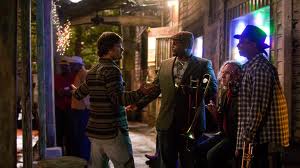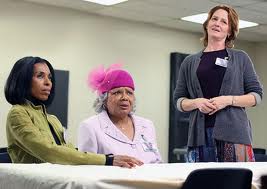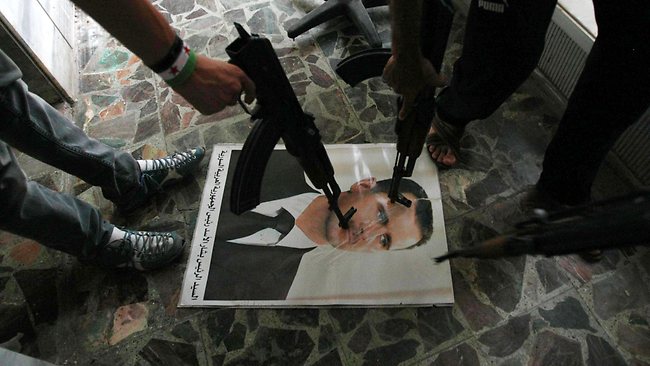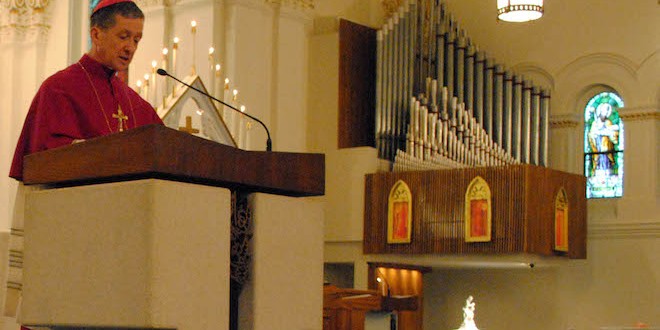 As I understand it, sacramentality expresses the belief that as human beings we can experience God through the “stuff” of life, and that God’s grace is made present through creation. The humble vessels of water, oil, bread and wine disclose the abundance of God’s grace in the seven sacraments. Sacred rituals bring the community together, nurturing the faith of old and young alike. Through the sacraments we come to appreciate the stories of our ancestors in faith, and see our everyday striving in the context of a much larger community–not just of the living but of the dead, or the communion of saints. We can be honest about our brokenness and the realities of sin–personal and structural. But a sacramental outlook sees God at work in this broken world.
As I understand it, sacramentality expresses the belief that as human beings we can experience God through the “stuff” of life, and that God’s grace is made present through creation. The humble vessels of water, oil, bread and wine disclose the abundance of God’s grace in the seven sacraments. Sacred rituals bring the community together, nurturing the faith of old and young alike. Through the sacraments we come to appreciate the stories of our ancestors in faith, and see our everyday striving in the context of a much larger community–not just of the living but of the dead, or the communion of saints. We can be honest about our brokenness and the realities of sin–personal and structural. But a sacramental outlook sees God at work in this broken world.
The HBO television series Tremé, created by David Simon and Eric Overmyer, is set in post-Katrina New Orleans. As a huge fan of the series, I was thrilled to hear that Tremé was renewed for a third season (Seasons One and Two have aired on HBO and Season One is available for download on iTunes and both are available on HBO Go). Why am I such a big fan? Well, part of why I love Tremé is that it reminds me of home (I grew up in Mobile, Alabama). And I’ve closely followed the news about post-Katrina clean-up efforts along the Gulf Coast, so I was interested in that part of the show’s story line. If you are familiar with The Wire, you know that Simon and Overmyer can be trusted to tackle complex issues with depth and sensitivity, and you expect compelling characters and drama drenched in authenticity. But what I appreciate most of all is the sacramental worldview of the show.
Tremé is unlike any other television series. The story builds slowly as the audience gets to know the characters, whose struggles seem as authentic as they are complex. The story does not focus only on one main character, but the ensemble cast is nevertheless connected by the city’s struggles as well as intersecting plot lines. One of the things that makes Tremé unique is that music is front-and-center; in the first episode trombonist Antoine Batiste (Wendell Pierce) is late to a second-line parade gig but once the parade is underway, the audience is carried along the parade route all-the-while learning about one of the unique traditions of New Orleans neighborhoods. Antoine is one of many struggling musicians in the first two seasons. Annie Tallarico (Lucia Micarelli), Sonny (Michiel Huisman), Delmond Lambreaux (Rob Brown), and Davis McAlary (Steve Zahn) are also rebuilding their lives, playing great music, and rethinking intimate relationships as the story goes on. The numerous guest performances by well-known musicians Kermit Ruffins, Allen Toussaint, Dr. John, and others combine with Steve Earle’s performance as the singer and songwriter, Harley, to demonstrate the breadth of musical history and culture in New Orleans.
New Orleans has a rich Catholic heritage, heavily influenced by French and Spanish settlers of the 18th century as well as the West African and black Creoles of the same time, and the Hispanic and Vietnamese Catholics of the more recent past. Some of the well-known festivals are rooted in the Catholic heritage of the city. While Mardi Gras is the best known example (Fat Tuesday is the day before Ash Wednesday and signals the last chance to party before Lent), Tremé also uncovers some of the other special days in the Catholic calendar, including All Saint’s Day (Yes, New Orleans is known for other saints besides these).
Now, in saying that Tremé presents a Catholic worldview, I do not claim that Simon and Overmyer are deliberate about this, or even aware of it. But the world they present in Tremé is at least consistent with a sacramental worldview, even if the writers aren’t thinking theologically. While the gritty drama covers adult–and sometimes dark–stories of political corruption, police brutality, street violence, sexual assault, discriminatory housing policies, detention of undocumented workers, FEMA failures, and persistent racial inequalities, it also demonstrates why so many New Orleanians refused to leave. It shows that New Orleans is resilient, special, sassy, and, in the best cases, a city in solidarity. The long musical interludes usher in a change of pace that seems unfamiliar to the television audience, but these scenes are the heart of the show, and draw you in emotionally in a way that dialogue can’t always achieve. The scenes of food preparation and New Orleans cuisine reveal a different but equally important aspect of the special flavor (pun intended) of New Orleans as a foodie paradise. And when you think about it, don’t great food and great music constitute two essential elements of the good life? “I came that they might have life” (Jn 10:10). Was Jesus talking about New Orleans-style joie de vivre? Are Janette Desautel’s shrimp and grits on the menu in heaven? The moments of grace abound, and the portrait of life goes well beyond music and food to show God’s presence through the “stuff” of life: reconciliation between a mother and daughter, a woman’s gradual process of healing from sexual assault, the dance of the Indian Chief, a coalition of concerned citizens marching together, the spreading of ashes over the mighty Mississippi.
If all you know about New Orleans are the boobs on Bourbon Street, you don’t know New Orleans. And if you wondered, as many Americans did, about why taxpayer dollars should be spent to help victims of Katrina, let Treme convince you that it is money well spent (sadly, too little, too late).
I was going to share some of my favorites scenes, but I really don’t want to give anything away. I will say that in two seasons the show has given voice to struggling musicians, chefs, community organizers, construction workers, cops, civil rights attorneys, grieving family members, music teachers, and many other concerned citizens. It is a story of a fractured community that is sometimes able to pull together in a common celebration of shared joy, but more often is plagued by the same injustices that threaten many other U.S. cities today: income disparity, isolationist attention to the “nuclear” family over the rest of the human family, corporate greed. On top of these, residents of the Gulf Coast battled “the storm,” which brought out both the best and worst of human nature in its aftermath. And yet Treme is a hopeful story. It is a redemption story of sorts, and of course a love story. This Catholic can’t wait to see what happens next.





